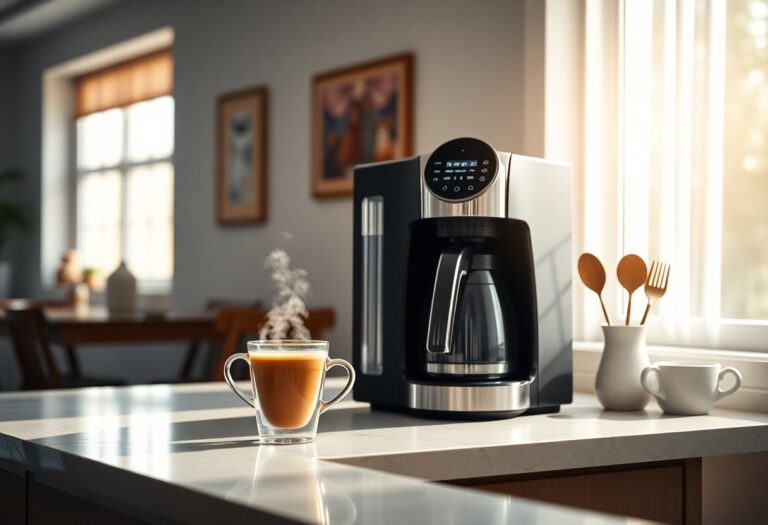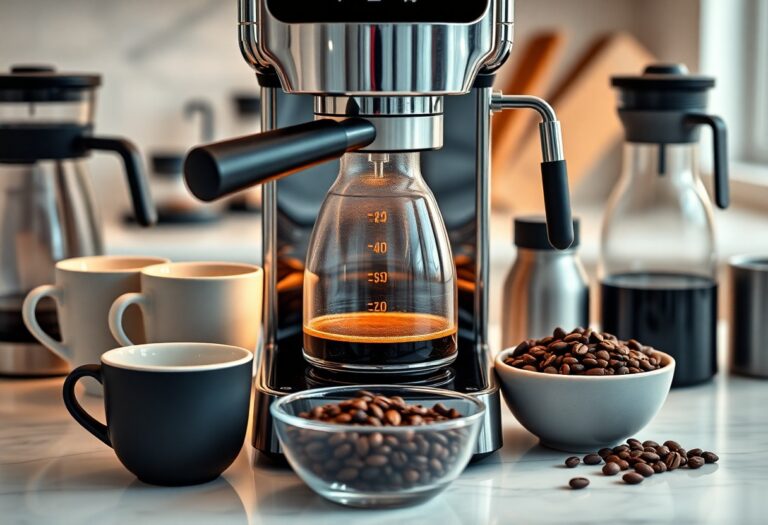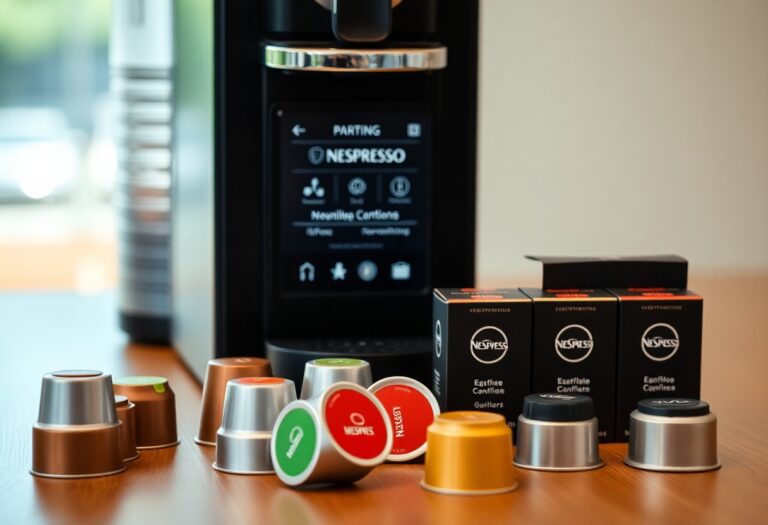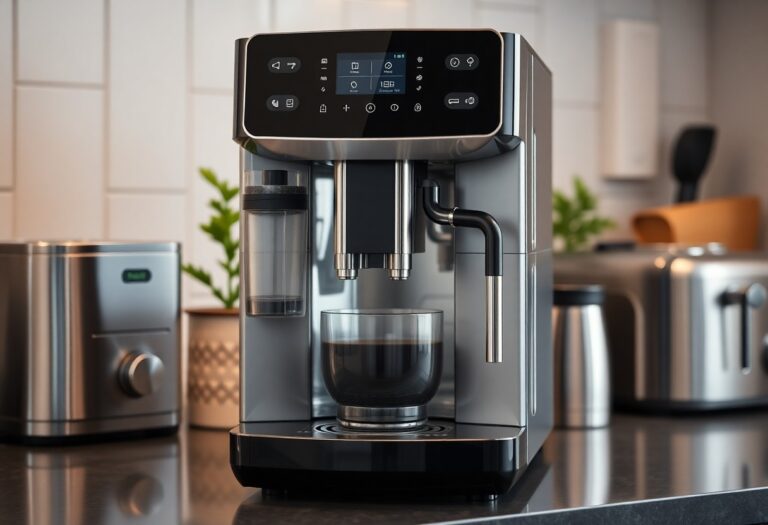What is the Best Home Espresso Coffee Machine – Residential Espresso
Most coffee enthusiasts crave the perfect espresso shot, and with the right home espresso coffee machine, you can achieve that ideal flavor and texture in the comfort of your kitchen. Understanding your unique preferences, from price to features, is vital when selecting the best machine for your needs. Whether you’re a novice or an experienced barista, this guide will help you navigate the options and make an informed decision to enhance your coffee experience at home.
Key Takeaways:
- Consider the machine’s type—manual, semi-automatic, or fully automatic—based on your brewing preferences and skill level.
- Look for a model with a good steam wand if you enjoy making milk-based drinks like lattes and cappuccinos.
- Check for temperature stability and pressure consistency, as these factors significantly impact espresso quality.
- Evaluate the machine’s build quality and ease of use, including features like programmable settings and ease of cleaning.
- Read reviews and comparisons to ensure the machine fits your budget while meeting your espresso-making needs.
Espresso Machines Unveiled: The Mechanics of Brewing Perfection
Understanding how an espresso machine works can significantly enhance your coffee experience at home. Each component plays a vital role in the delicate process of extracting flavor, aroma, and body from your chosen coffee beans. The interaction between water temperature, pressure, and time directly influences the final espresso shot, delivering a balance that aficionados seek. Discovering the inner workings of these machines will empower you to achieve your ideal brew.
The Anatomy of an Espresso Machine
An espresso machine consists of several key components, each serving a distinct purpose in the brewing process. The most critical parts include the boiler, where water is heated, the group head, which holds the coffee grounds, and the portafilter, through which the espresso flows. Additionally, the pump generates the necessary pressure to extract flavors effectively, while the steam wand is perfect for frothing milk. Familiarity with these elements will help you appreciate the science behind crafting the perfect espresso.
Key Features that Influence Espresso Quality
Your choice of espresso machine should reflect several key features that play a pivotal role in the quality of your brew. Factors like temperature stability, pressure consistency, and build quality are important for producing the best espresso. Here are some of the features that can impact your espresso experience:
- Pressure Control: Maintaining optimal pressure ensures proper extraction.
- Temperature Stability: Accurate temperature regulation helps enhance flavor.
- Build Quality: Durable materials contribute to longevity and performance.
- Grind Size Adjustment: Customizable grind settings can elevate results.
- Ease of Use: User-friendly controls allow for a smoother brewing experience.
Choosing the right espresso machine involves considering how each key feature interacts to deliver a superior cup of coffee. Long-term consistency in pressure control ensures you can dial in the perfect extraction each time. Maintaining optimal temperature stability influences the richness of the flavors you draw out of your coffee grounds, while high build quality can ensure reliable performance, even after countless brews. From customizable grind size options to ensure the right extraction rates, to ease of use that encourages experimentation, every feature contributes to your ability to craft the perfect espresso. This knowledge allows you to make an informed decision when selecting a machine for your home.

Price vs. Performance: Finding Your Sweet Spot
Balancing price and performance is vital when selecting your home espresso coffee machine. A unit that falls within your budget should still ensure quality espresso and a pleasant user experience without compromising on critical features. Investigate The Best Espresso Machine options to help pinpoint machines that deliver exceptional value for what they cost.
Analyzing Cost vs. Features
Evaluating cost against features allows you to prioritize what’s crucial for brewing great espresso at home. Look for machines equipped with features like temperature stability, pressure control, and a built-in grinder, as these can elevate your coffee experience. Cheap models often skimp on these functions, making it evident that spending slightly more might save you from future disappointment.
Investing Wisely: Value vs. Budget
Investing in a quality espresso machine typically means navigating the balance between value and your budget constraints. Instead of solely focusing on the initial buy-in price, consider the machine’s longevity, maintenance costs, and the potential for making cafe-quality drinks at home. A higher-priced model may offer superior durability and features that justify the investment over time.
Assessing long-term value is crucial; a top-tier espresso machine may initially seem like a steep expense, but its ability to produce consistently excellent espresso and withstand the rigors of daily use can lead to significant savings. Additionally, factor in the costs associated with specialty coffee at cafes. By opting for a machine that offers both quality and longevity, you not only enjoy enriched coffee moments but also improve your overall cost-per-cup average. Ultimately, investing wisely creates an espresso journey that blends pleasure with economic sensibility.
User Experience: The Importance of Usability
User experience is a key factor when choosing the right home espresso machine. A machine that’s intuitive and easy to operate will enhance the overall enjoyment of crafting your daily espresso. Features like user-friendly interfaces, clear instructions, and straightforward operation allow you to focus on creating delicious coffee rather than struggling with complicated setups.
Ease of Use for Beginners vs. Advanced Users
Selecting an espresso machine that caters to both beginners and advanced users is necessary. Beginners benefit from simple controls and automatic features, while advanced users look for customization options and manual operations that offer greater control over their brew.
- Beginners – Seek machines with automatic shot control and built-in grinders.
- Advanced Users – Opt for models that allow for temperature and pressure adjustments.
- Consider integrated tutorials or app support for guidance.
- Evaluate user reviews focusing on ease of operation and learning curve.
Maintenance and Cleanup: Simplifying the Process
Maintenance and Cleanup: Simplifying the Process
Regular maintenance and efficient cleaning processes are necessary for keeping your espresso machine in top condition. A machine designed with easy access to components will save you time and effort, making it more enjoyable to use regularly.
Many modern espresso machines feature components that are removable and dishwasher-safe, which mitigates hassle during cleanup. Additionally, user-friendly indicators for cleaning cycles simplify the maintenance process. Machines with built-in cleaning options may require less frequent deep cleaning, allowing you to appreciate your espresso without the burden of constant upkeep. Some models even include self-cleaning options, ensuring that your machine remains functional and efficient with minimal intervention from you.
Barista Secrets: Gaining an Edge with Customization
Customization can transform your home espresso experience from ordinary to extraordinary. By adjusting different elements of your brewing process, you can tailor each cup to your personal taste, emphasizing unique flavor notes and enhancing overall quality. Exploring adjustments in grind size, water temperature, and extraction time allows you to truly experiment with your espresso, and gain the barista edge you’re striving for at home.
Dialing in Your Espresso: Grind, Dose, and Pressure
Perfecting your espresso relies heavily on the interplay between grind size, dose, and pressure. A finer grind increases surface area for extraction, while a coarser grind results in a milder flavor. Adjust your dosing between 18-20 grams for optimal flavor concentration. Maintaining a consistent extraction pressure of 9 bars leads to balanced flavors and consistent crema. Tailoring these variables will invite you to explore a spectrum of aromas and tastes in your espresso.
Leveraging Milk Frothing Techniques for Crema
Frothing milk for your espresso not only adds richness but enhances the drink’s texture. Aiming for microfoam—smooth, velvety, and dense—can significantly improve the quality of every sip. Achieving this involves proper steam techniques, such as angling the steam wand to create a whirlpool effect, which breaks down larger bubbles and integrates air more effectively. Incorporating *tension* and *finesse* in your frothing process will also allow you to create the perfect balance of foam and milk in your beverages.
To create exceptional crema, start with cold, fresh milk. Position the steam wand just below the surface to introduce air while simultaneously heating the milk. As the milk expands, control the steam to maintain that necessary whirlpool motion, ensuring even aeration. This technique can produce a luscious microfoam that clings to your espresso, offering a delightful visual appeal and a creamy mouthfeel. A well-frothed milk not only enhances flavor but elevates the entire drinking experience, allowing the rich nuances of your coffee to shine through alongside the luxurious texture.

Consumer Insights: What Real Users Are Saying
Users rave about their experiences with home espresso machines, often citing the joy of crafting café-quality drinks in the comfort of their kitchens. Many express satisfaction with the convenience and control that these machines offer, allowing them to experiment with various beans and brew methods. Enthusiasts eagerly highlight the importance of learning the nuances of their specific model, often sharing tips on mastering the grind size, tamp pressure, and extraction time to achieve a perfect shot.
Reviews and Recommendations from Enthusiasts
Coffee aficionados frequently recommend specific models that combine quality with affordability. One standout is the Breville Barista Express, praised for its built-in grinder and user-friendly interface, making it ideal for beginners and experts alike. Another favorite, the Rancilio Silvia, is lauded for its durability and ability to produce consistent, rich espresso. Users appreciate that both machines offer flexibility for customization, catering to diverse tastes and preferences.
Common Pitfalls and Misconceptions
Despite the excitement, many users encounter pitfalls that can undermine their espresso-making journey. A common misconception is that all espresso machines are created equal in quality. Some models may promise gourmet-level coffee but lack necessary features like sufficient pressure or temperature control, leading to mediocre results. Additionally, novices often underestimate the importance of routine maintenance, forgetting that regular cleaning and descaling are imperative to keep your machine in optimal working condition.
This lack of understanding can lead to frustrations among first-time users who expect immediate perfection without dedicating time to learn proper techniques. Additionally, believing that investing in a high-end machine alone guarantees exceptional espresso can be misleading. The grind size, coffee freshness, and water quality all significantly impact your results. Engaging with online communities, reading reviews from seasoned users, and experimenting will enhance your skills and appreciation of espresso crafting. Embrace the journey of learning rather than expecting instant mastery, and your efforts will surely yield delicious rewards.
To wrap up
With these considerations, you are now equipped to find the best home espresso coffee machine for your needs. Evaluate your budget, the size of your kitchen, and your coffee preferences to pinpoint the right model. Whether you desire a manual machine for hands-on brewing or a convenient automatic option, understanding the features available will enhance your coffee experience. Invest time in researching reviews and product specifications to ensure your choice adds both quality and enjoyment to your daily routine.
FAQ
Q: What should I consider when choosing a home espresso machine?
A: When choosing a home espresso machine, consider factors like your budget, the machine’s size, its ease of use, and the level of maintenance required. Additionally, assess whether you prefer a manual, semi-automatic, or fully automatic model, as well as whether you want built-in grinders or milk frothers. Research different brands and read user reviews to understand the reliability and functionality of various machines.
Q: How much should I expect to spend on a quality home espresso machine?
A: The price of a quality home espresso machine can vary widely depending on the features and brand. Basic models might start around $100, while mid-range options typically range from $300 to $800. High-end machines with advanced functionality can cost upwards of $1,000. It’s important to balance your budget with the features that are important to you, as a better machine can enhance your coffee experience.
Q: What are the most recommended brands for home espresso machines?
A: Some of the most recommended brands for home espresso machines include Breville, De’Longhi, Rancilio, Gaggia, and Saeco. Each brand offers a range of models suited for different skill levels and budgets. Breville is known for its user-friendly features, while Rancilio and Gaggia provide excellent espresso quality for enthusiasts. Look for models with good customer reviews and warranties for added assurance.
Q: Can I use pre-ground coffee, or do I need a grinder?
A: While using pre-ground coffee is possible, having a grinder is highly recommended for the best flavor and freshness. Coffee begins to lose its aroma and taste once it’s ground, so grinding beans just before brewing can significantly enhance your espresso results. Many espresso machines come with built-in grinders, but standalone grinders are also available to cater to various preferences.
Q: How do I maintain my home espresso machine?
A: Regular maintenance is vital to ensure your espresso machine operates effectively and lasts longer. This generally involves cleaning the machine’s components, descaling it every few months, and regularly emptying the drip tray and grounds container. Follow the manufacturer’s guidelines for care specific to your machine. Using filtered water can also help reduce mineral buildup and improve the taste of your espresso.







